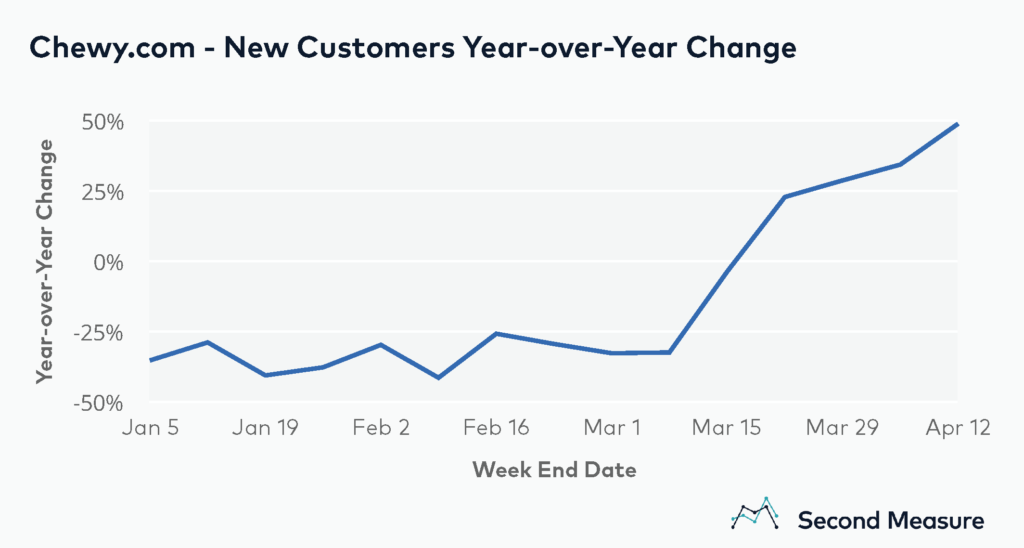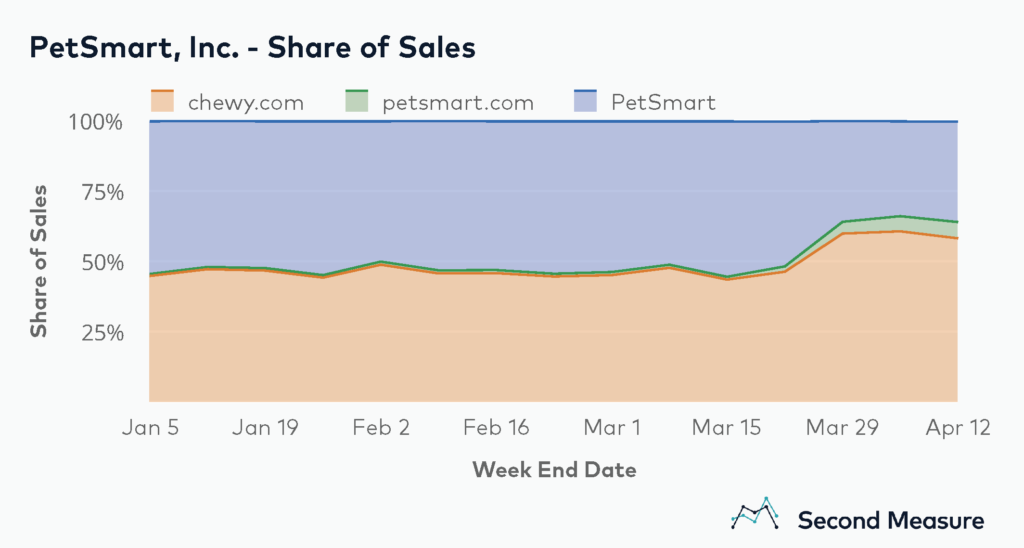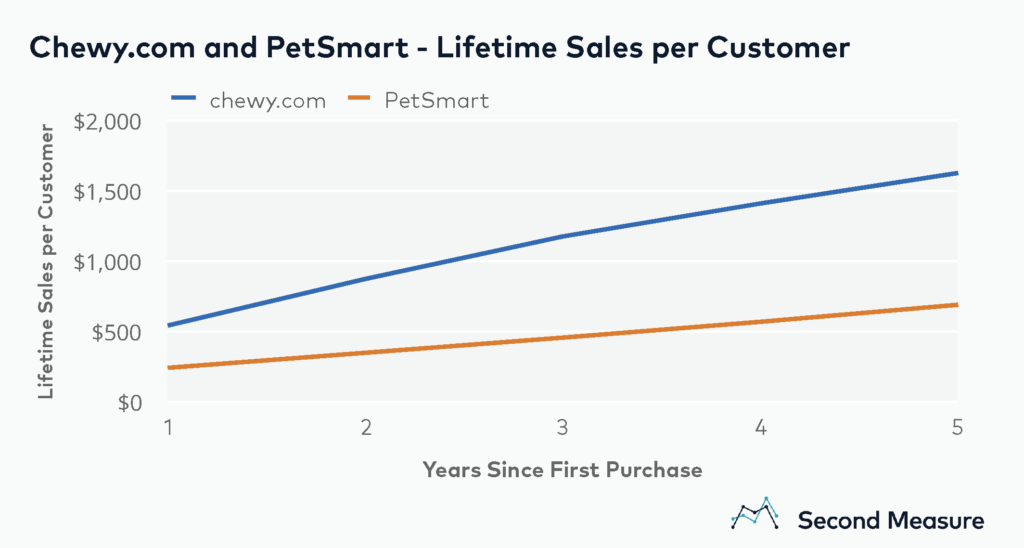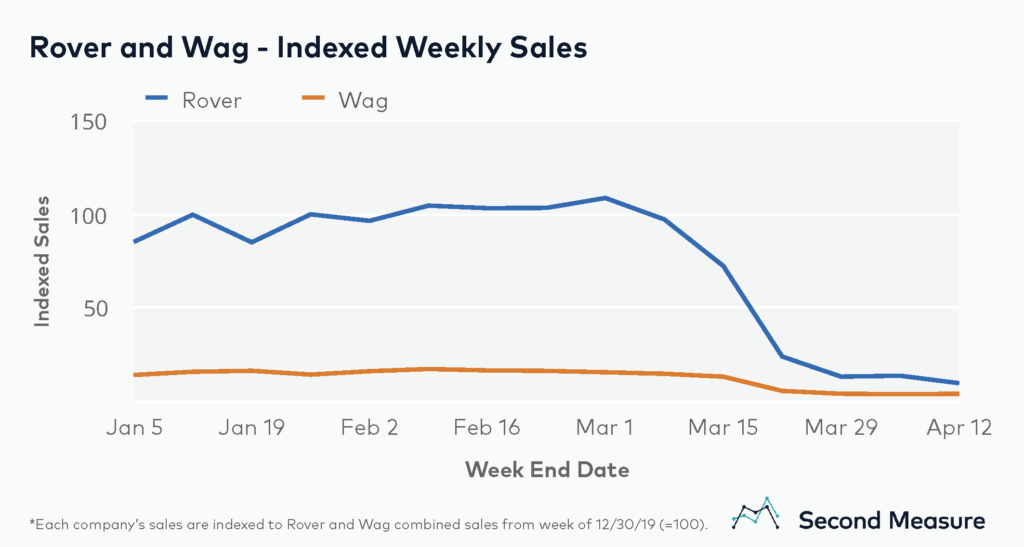NOTE: Bloomberg Second Measure launched a new and exclusive transaction dataset in July 2022. Our data continues to be broadly representative of U.S. consumers. As a result of this panel change, however, we recommend using only the latest posts in assessing metrics, and do not support referring to historical blog posts to infer period-over-period comparisons.
As COVID-19 has necessitated social distancing, home-bound Americans are heaping more attention than ever on their pets. Animal companions have become a source of comfort—or even purpose—as well as a cause for concern, in light of news that cats are also susceptible to the coronavirus. To keep their pets happy and well fed during the quarantine, U.S. consumers are increasingly turning to pet supply delivery service Chewy.com.

In January and February of this year, fewer new customers made their first purchase with Chewy.com than in the comparable period in 2019. In March, however, new customer growth rose sharply and has remained elevated. Weekly new customer growth averaged 34 percent year-over-year over the four-week period spanning March 16 to April 12.
Pet owners increasingly likely to order online during quarantine
Similar to other essential retailers, like grocers and wholesale clubs, pet-store chain PetSmart—which acquired Chewy.com in 2017—saw a lift in total sales as panic buying was seen across the country in early March, followed by a dropoff in sales as shelter-in-place orders became widespread.
Data from PetSmart and its brands reveals that, even while physical pet stores have remained open, Chewy.com accounts for a higher share of PetSmart’s total sales than ever before. As of April 12, Chewy accounted for roughly 60 percent of overall spending, whereas it consistently accounted for less than half of PetSmart weekly sales prior to March 23.

Online orders are also up at petsmart.com, which accounted for roughly 1 percent of weekly sales for PetSmart, Inc. in January and February. As of April 12, that number has risen to 6 percent.
Chewy customers spend more over time
New customer growth at Chewy should be a welcome trend for PetSmart considering that, over time, shoppers typically spend more at Chewy.com than at PetSmart. In their first year as customers, Chewy shoppers spend an average of $544—more than double what PetSmart customers spend in a comparable window.

At the five-year mark, the trend is similar, with Chewy customers’ lifetime spend topping $1600, on average, compared to nearly $700 at PetSmart. The convenience of Chewy’s subscription delivery service may be a factor in increasing spend over time.
Demand for dog walkers declines as pet owners stay home
While pets may be pleased to have their owners home, shelter-in-place orders have been hard on petcare services like Wag and Rover. Both companies offer walking, sitting, boarding, and daycare and have seen sales drop significantly during the pandemic. As of April 12, Rover—whose year-to-date sales are nearly six times greater than Wag’s—saw its weekly sales drop 90 percent relative to January and February averages. At Wag, sales fell 73 percent over the same period.

Request a demo today to see what else transaction data can reveal about consumer behavior in the COVID-19 era.
